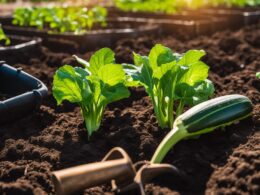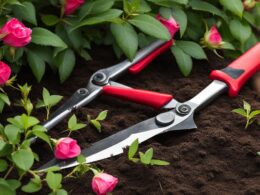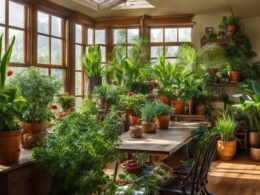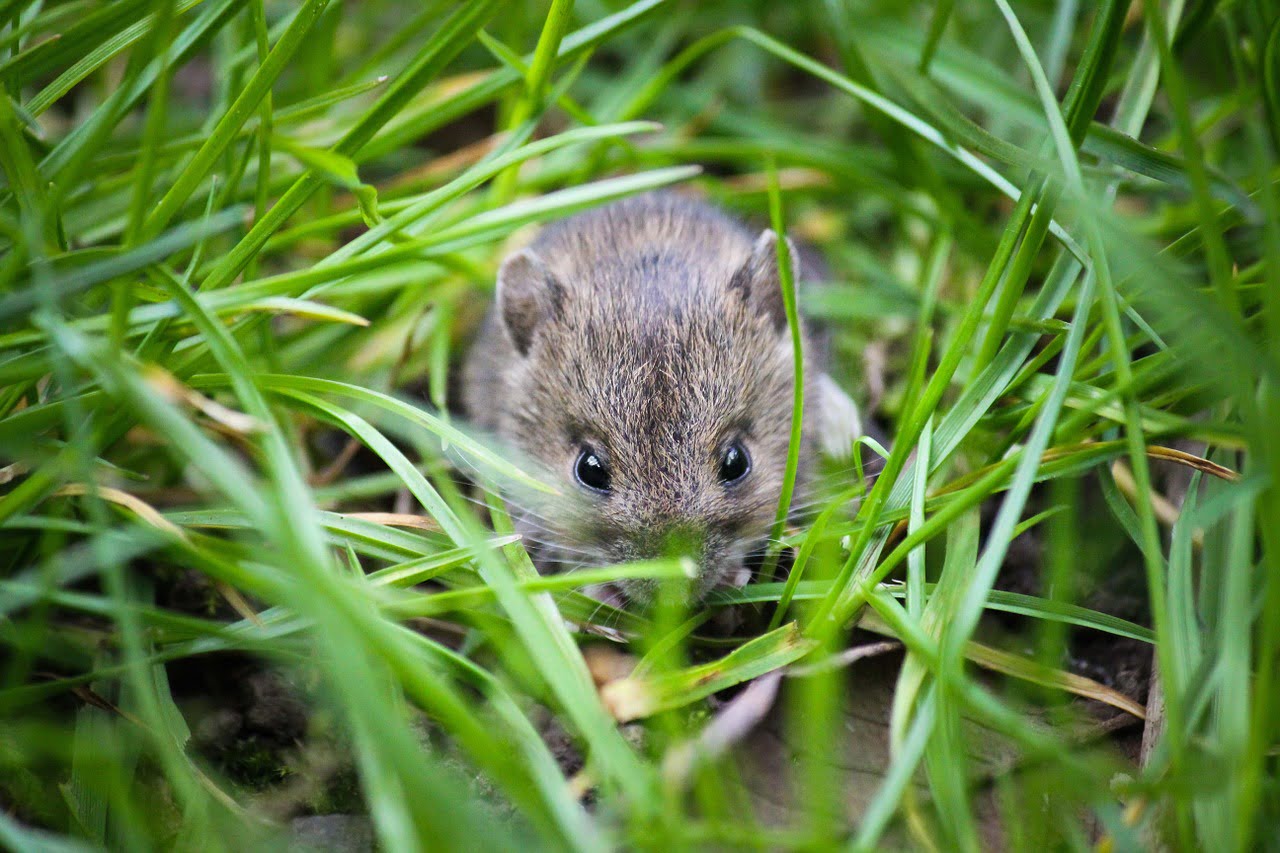HGTV
Julie Martens Forney offers some insight on air plants on HGTV.com. Air plants, also known as tillandsia, are a type of bromeliad and are native to the Western Hemisphere. Most notably from the southern United States to northern Argentina. When you find them in their regular habitat, air plants perch above ground. They are able to find their footing in several ways. This includes tree branches, rocks, rooftops and yes, even power lines. Air plants are native in many natural settings, including forests, deserts, and rainforests. Air plants have leaves, roots and can produce flowers. One unique trait about tillandsias, however, is that they don’t require need soil in order to grow. Roots act as anchors in tillandsias, thereby securing plants to their supports. Leaves take care of absorbing moisture. The leaves on an air plant cover specialized scales in what are called trichomes. Trichomes are able to absorb water and nutrients. Some trichomes are smooth while others are hairy. If you have tillandsias in a home situation, give it bright, but filtered sun, found in an east, south or west-facing window. Gardeners generally put an air plant in a bathroom to take advantage of shower-generated humidity. Still, having enough sunlight is very important. Being outside, a screened porch or a pool enclosure typically give air plants the filtered sunlight they want. The trickiest part of growing tillandsias is probably watering them. Air plants usually die when they are inside due to under watering because people wrongly assume they plants absorb moisture from the air. This situation works when you are on a mountaintop or in a rainforest. But when you are in the comfort of your heated or air-conditioned home, air plants require water.HGTV (Watering Your Plants)
Just misting your air plants will not give them enough moisture. It can help raise humidity around the plants, but it will not ensure their survival. If misting causes water to collect where leaves emerge, it can actually kill plants. The best way to water tillandsias is by putting them it in a dish of water for about 12 hours. Don’t worry about overwatering. Air plants take only the water they need to stay alive. Only use rainwater or bottled drinking water for your air plants. It’s important to not use softened water because it’s high in salts. If you live in an area that has hard water, not that the chalk content in it will ultimately clog the trichomes on air plant leaves. When you remove the submerged plants from the water, shake them carefully upside down a few times to get the water out from the middle of the plant. When the plant is indoors, an air plant watered by this submerging process should be watered every 10 to 14 days. Check on your plant’s appearance like a hawk so as to know when to water. Take note of the leaf’s color as well as its appearance. If leaves on air plant become drought-stressed, they could curl under, their color could appear flatter and its leaf tips could turn brown. For fertilization, use a water-soluble fertilizer made specifically for epiphytes, bromeliads or air plants. This is because these fertilizers have nitrogen in a form air plant leaves are able to absorb. It is important to add your fertilizer to the water before submerging an air plant. Always follow the directions on the fertilizer’s package.Better Homes and Gardens
Here are some more tips on air plans from Better Homes and Gardens.How to Grow Air Plants
Even though they are easy to care for, there are a few rules to follow when growing air plants from Better Homes and Gardens:
-
Constant air circulation — as the name indicates — is paramount to keeping your plant happy.
-
Air plants need some moisture; from late spring to mid-autumn, mist daily. In winter, mist only once or twice a week.
-
Fertilize monthly in spring and summer using a low-nitrogen liquid fertilizer mixed at only one-quarter strength. In general, fertilize weakly.
-
Although they love warm weather, most air plants need protection from full sun. If it’s a type that grows naturally wild on trees, keep it in moist, partial shade. If it is a ground type, such as T. cyanea or T. lindenii, grow it indoors in bright, filtered light and outdoors in partial or dappled shade.
-
Don’t let an air plant sit somewhere that’s colder than 45 degrees; it will die at those temperatures. If you live in Zone 9 or warmer, you can grow an air plant outdoors all year if you keep it dry during the winter.
How to Use Air Plants
Air plants look great alone decorative pieces or in an tillandsia terrarium. It is a good idea to put varieties including Tillandsia aeranthos otherwise known as ‘Amethyst’, a.k.a. the rosy air plant, into a pot or against a container. This will either complement or contrast with its pink flower spike. Go ahead and group three Tillandsia ionantha and add some sort tropical touch to give it more color! Air plants that naturally grow by trees can be tied against a wooden post using fishing line and some moss for extra moisture. Tillandsia species are good by a planted branch with orchids. This is because they like the same basic conditions. Hanging your air plants are a very popular design.Air Plant City
The aptly named Air Plant City gives its own take on taking care of air plants, as well as some other tips.Caring for Your Air Plants
Tillandsias grow differently than most other houseplants, so they can be confusing to the beginner. They are really very hardy and require much less attention than other house plants.The following simplifies the instruction but you can scroll down for much more specific information. Here’s Air Plant City’s take:
-
Provided the atmosphere is not too dry they can survive with water misting and the occasional bath.
-
Give them bright, filtered light
-
Protect them from frosts.
-
If you are growing them indoors and the air is dry, you will need (at minimum) to submerge the plant in water for 2-3 hours about every two weeks.
-
In a shaded-house or unheated home, you can use a soaking mist once or twice a week in summer, once a month in cooler weather.
-
You can fertilize by adding a pinch of Bromeliad or Orchid fertilizer to your mister.
Light
As mentioned before, “Bright filtered light is the general rule, and the higher the humidity of the air the higher light will be tolerated.” The publication continues:Outdoors the silvery-leafed varieties (ex: Xerographica, Harissii) can usually be grown in full sun, but in an unshaded greenhouse or close to un-shaded glass in a sunny room or conservatory the same plant will quickly burn because the air dries out like an oven. In a very sunny spot indoors they may need daily misting or weekly soaking depending on which method you prefer.
Artificial Light
According to Air Plant City, fluorescent lighting is best. “Plant should be no further than 36″ from the fluorescent tubes and can be as close as 6″. A four-tube 48″ fixture works well. Bulbs can be any full spectrum type Gro-Lux, Repta-Sun, Vita-Lite, etc. Light should be set with a timer, 12 hours per day.”Watering Your Air Plants
The publication, unlike some of the ones above, recommends that you “Thoroughly wet your Tillandsia 2-3 times per week.” It should be “more often in a hot, dry environment and “less often in a cool, humid one.” When there are very dry conditions and loss of moisture, air plants are not able to get replacement water from their roots like a standard terrestrial plant, nor are they able to draw upon their internal reserves like a succulent.Type of Water
The water you use is very important. Don’t ever, ever use distilled water! Softened Water is a not good option either because of its salt content. Filtered water and tap water is good because it has sat long enough for the chlorine to dissipate. Bottled water is also ok to use. Pond Water and aquarium water works well as long as they aren’t overcrowded with fish and/or reptiles. When they are outdoors you may seldom, if ever need to water your tillandsias if you live in the humid Southeast. When indoors, the hotter and drier the air, the more you must water your air plants. Plants should be given enough light and air circulation to dry in, but for no longer than 3 hours after you water them. It’s important to note that wind can be detrimental as the plant dries too quickly. Remember that inside with a window fan too. If the plant dries very quickly, there is no hydrating happening. Spray misting is not sufficient for watering but can be helpful between regular watering’s, especially in dry climates to increase humidity. If your air plant is in a shell, Ensure you empty the water out. Tillandsias do not survive in standing water. Under-watering can be evidenced by an exaggerating of the natural concave curve of each leaf. After sufficiently wetting your plants, turn them upside down and shake them ever so gently. Here is one other thing about watering your air plant:It is much better to water in the morning than at night. Air plants absorb the Carbon Dioxide from the air at night instead of the day time. If the plant is wet, it does not breath therefore, unless it can dry quickly at night, plan on morning baths.
Air Circulation
After each watering, your air plants should be given enough “light and air circulation to dry in 4 hours or less. Do not keep plants constantly wet or moist. Do not allow them to dry too quickly though. 1-3 hours is optimum.” It is also worth noting that if the air is hot, a breeze can act to cool your tillandsia, thereby keeping it from becoming overheated.Temperature
The ideal temperature range for air plants is between is 50 – 90 degrees Fahrenheit. They can be kept outside during 40 degree Fahrenheit temperatures, but should only be done so when you know it will be warm during the day. Most tillandsia will die with frost.Fertilizer
Air Plant City recommends that you use Bromeliad fertilizer (17-8-22) twice a month because “It is great for blooming and reproduction!” They continue:Other water-soluble fertilizers can be used at 1/4 strength (Rapid Grow, Miracle-Grow, etc.) if Bromeliad fertilizer is not available. Note Here: If you use pond water or aquarium water, Don’t use fertilizer. Soaking the plants in these waters is a natural fertilizer and can help revive plants that are in distress.
Growth Cycle
As the website notes, “Bromeliad Tillandsia have a life cycle of one plant growing to maturity and blooming.” Before, during or after blooming all depending on the species, your air plant starts producing offsets (Pups). Most plants tend to produce between 2 to 8 pups. While each plant will flower once in its lifetime, it is important to keep in mind that each pup is a plant and it will bloom. Flowers can last from several days to several months, depending on the species. Different species of air plants bloom at different times depending also on how its cared for and the environment it is in. Blooms can be expected from the middle of winter through the middle of summer. This, of course, depends on the plant. Should you leave your plant to clump, just take the leaves off of the mother plant as she begins to dry up. Pull the leaves out with a sideways tug very carefully. If the leaf resists, it has not yet died. In that case, just trim any areas that have dried up. After the mother plant has been removed, the gap will be filled by the other plants growing & spreading.Removing Air Plant Pups
Here’s what Air Plant City recommends on removing air plant pups:To remove the pups, they should be at least 1/3 to 1/2 the size of the mother plant. Hold both mother and pup at their bases and gently twist in a downward motion. If this does not happen easily, you may need to remove the pup by cutting downward as close to the mother as possible. Do not discard the mother plant yet, as long as she is still alive she will continue to produce more pups for you. Often taking several years after blooming before she finally dies.
Mounting Your Air Plant
Tillandsias are able to grow just about anywhere. This includes but is not limited to on rocks, in a seashell or on coral, in ceramic or pottery or attached to wood (but not pressure treated wood this is impregnated with copper, and copper will kill your plant). Remember that you have to be able to water your air plant and that it must be placed somewhere that it will get enough light. Try not to put your air plants in containers that hold water as they have to dry out. If you decide place air plant in a container that holds water, get rid of the excess water after watering. This also applies when mounting your tillandsia. Do not surround your plant with moss. The reason for this is because it will end up holding too much water and will rot your plant.Attaching Your Air Plant
Air plant City says that “You can use glue, wire, fishing line, twisty ties, nails or staples. Nails and staples can only be used on plants with a woody stolon or with sufficient roots. DO NOT staple your plant on its fleshy parts as it will kill it. Try to use a waterproof glue such as Liquid Nails, E6000, or hot glue, allowing the glue to cool for 5 seconds. We can’t stress enough: Do not use superglue or copper wire as these will kill your plant.”Airplant.com
Finally, Airplant.com offers its take on caring for air plants. It describes itself as “The Largest Air Plant Grower In North America.”Indoor Care
These instructions are specifically for indoor care.Light
Lighting for air plants should be bright but filtered (April – October). They should not be left in the direct sun in the summer months. This will cause them to become sunburned. Tillandsias love direct sun in the months of November through March). Tillandsias may be grown in the house directly in front of a window. It is prudent to have fresh air, but the most important thing is to have bright filtered light.BEWARE: Trees, overhangs and window tinting can rob your plants of needed light. Place plants no further away than 3 feet in front of a bright window.
Artificial Light
Fluorescent light is most ideal. Plants should be no further than 36″, or three feet from the fluorescent tubes and can be as close as 6″.A four-tube 48″ fixture works well. Bulbs can be any full spectrum type Gro-Lux, Repta-Sun, Vita-Lite, etc. Light should be set with a timer, 12 hours per day.
Water
Water your air plant about 2-3 times a week. You should water your air plant more often when it is in a hot and dry environment. Water your air plant less often it is in a cool, humid environment. Plants should have enough light and air circulation to dry in for no longer than 4 hours after watering. Spray misting is insufficient as the sole means of watering but may be beneficial between regular waterings in dry climates to increase the humidity. If the plant is in a shell, be sure to empty the water out. Tillandsias will not survive in standing water. Under-watering is evidenced by an exaggerating of the natural concave curve of each leaf.Fertilizer
Use Bromeliad fertilizer (17-8-22) twice a month. It is GREAT for blooming and reproduction! Other water-soluble fertilizers can be used at 1/4 strength (Rapid Grow, Miracle-Grow, etc.) if Bromeliad fertilizer is not available.Are the Tips for Growing Air Plants Also Applicable to Growing Bamboo Plants in a Home Setting?
Are the tips for growing air plants also applicable to growing bamboo plants at home? While both plants require minimal care, they have different needs. Bamboo thrives in bright, indirect light and needs regular watering, whereas air plants prefer indirect light and require misting or soaking. So, the tips for growing bamboo at home may not directly apply to growing air plants and vice versa.









